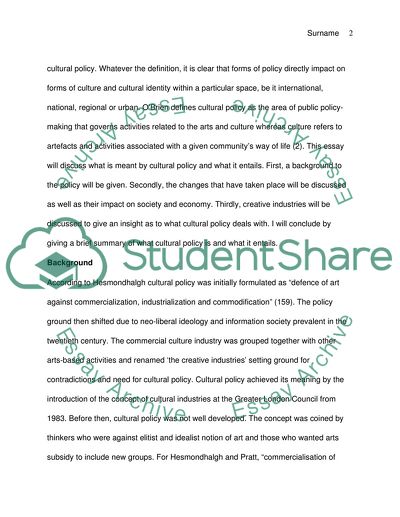Cite this document
(“What is cultural policy and what does it involve Essay”, n.d.)
What is cultural policy and what does it involve Essay. Retrieved from https://studentshare.org/sociology/1631125-what-is-cultural-policy-and-what-does-it-involve
What is cultural policy and what does it involve Essay. Retrieved from https://studentshare.org/sociology/1631125-what-is-cultural-policy-and-what-does-it-involve
(What Is Cultural Policy and What Does It Involve Essay)
What Is Cultural Policy and What Does It Involve Essay. https://studentshare.org/sociology/1631125-what-is-cultural-policy-and-what-does-it-involve.
What Is Cultural Policy and What Does It Involve Essay. https://studentshare.org/sociology/1631125-what-is-cultural-policy-and-what-does-it-involve.
“What Is Cultural Policy and What Does It Involve Essay”, n.d. https://studentshare.org/sociology/1631125-what-is-cultural-policy-and-what-does-it-involve.


